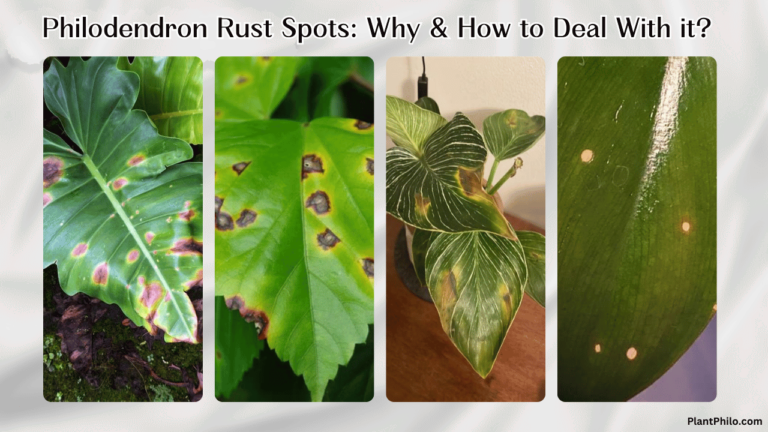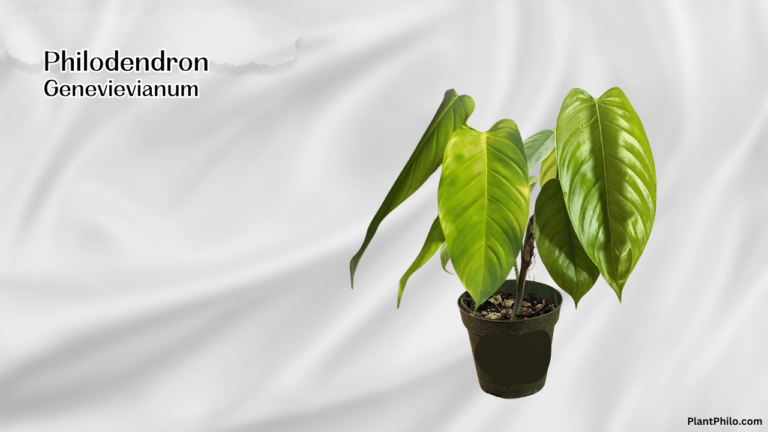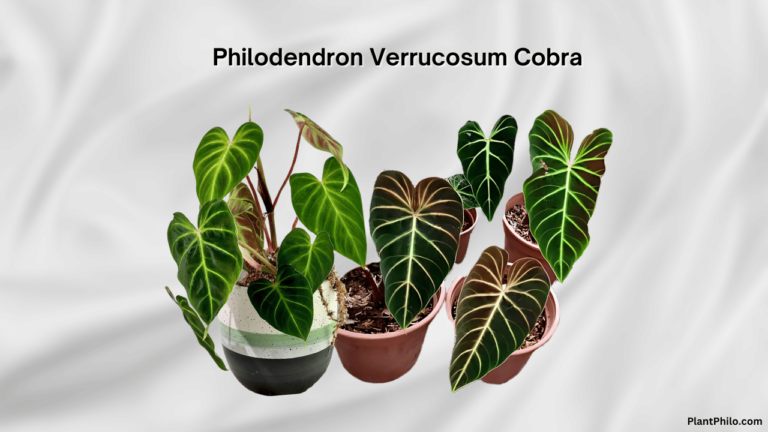How to Prune Split Leaf Philodendron for Healthy Growth and Shape
When my split leaf philodendron starts to look messy or take up too much space, I know it’s time for a trim. The best way to prune a split leaf philodendron is to cut back overgrown vines to a node, which is the spot where leaves are growing; this helps the plant grow fuller and healthier.
Using sharp, clean shears gives a straight cut and helps prevent plant stress or damage.

Learning the right way to prune not only keeps my plant tidy but also encourages new growth, making it bushier and more attractive. If the idea of cutting your plant makes you nervous, don’t worry—pruning split leaf philodendrons is straightforward when you follow a few simple steps.
If you’re ready to refresh your plant and keep it thriving, this guide will show you exactly how to do it, so your philodendron can fit perfectly in your space and look its best.
Essential Tools and Preparations

Before I start pruning my Split Leaf Philodendron, I make sure I have the proper tools and keep them very clean. Using the right equipment and sanitation helps keep my plant healthy and free from disease.
Choosing the Right Pruning Tools
I always use sharp, clean shears or scissors when pruning. Dull blades can crush or damage the stems, which may slow down healing and even invite pests.
Clean, sharp cuts help my plant recover more quickly. For thicker stems, I use pruning shears or even a small hand saw for the largest growths.
I avoid using tools meant for other tasks because they may not give the cleanest cut. Here’s what I keep nearby:
- Sharp pruning shears for thin or medium stems
- Scissors for small leaves or delicate trimming
- A hand saw for thick, woody stems
- Gardening gloves to protect my hands
Using the right tool for each cut makes the process safer and helps my plant thrive. If my shears feel sticky or hard to use, I know it’s time to clean or sharpen them.
Sanitizing Equipment to Prevent Disease
I always sanitize my tools before I start and after each cut, especially if my plant looks unhealthy. Diseases can spread quickly from dirty blades.
I use one of these simple disinfectants:
- Rubbing alcohol (70% or higher)
- A mix of 1 part bleach to 9 parts water
After dipping the blades in disinfectant, I let them air dry or wipe them with a clean towel. I repeat this step if I move from one plant to another.
Clean tools lower the risk of spreading bacteria and fungi. This simple habit keeps my philodendron and other plants safe from infections.
More about the importance of tool choice and sanitation for Split Leaf Philodendrons can be found on Greg’s guide to pruning Philodendrons.
Best Time and Conditions for Pruning

I prune my split leaf philodendron at the right time to help it grow strong and healthy. It is important to choose a season when the plant will recover quickly and to check for any signs of poor health before I start cutting.
Identifying the Ideal Pruning Season
I find that late spring or early summer is best for pruning a split leaf philodendron. This is when the plant is in its active growing period and can recover from cuts faster.
Pruning in these warmer months also helps prevent shock and reduces the chances of disease. If I need to remove yellow or dead leaves, I know I can do light trimming at any time of year.
However, I avoid heavy cuts in winter, as the plant is usually dormant and it will not grow back as quickly. According to gardening resources, spring and fall are preferred, but major shaping is best done as the plant comes out of winter dormancy and before the summer heat really starts.
More information can be found in this guide on when to cut back split leaf philodendron.
Assessing Plant Health Before Pruning
Before I start pruning, I always inspect my plant closely. I look for symptoms like pests, wilting, root rot, or spots on the leaves.
If I find any signs of illness or stress, I hold off on pruning, since stressed plants can have trouble healing. I always use clean, sharp tools to avoid spreading bacteria or fungi.
If my plant is healthy and the leaves are firm and green, I know it is safe to proceed. Taking these careful steps prevents damage and helps me keep my split leaf philodendron in good condition for the season.
For more detailed instructions on plant care and health assessment, I use this complete guide to caring for split leaf philodendron.
Step-By-Step Pruning Techniques
Pruning a Split Leaf Philodendron keeps the plant healthy and encourages strong, compact growth. I focus on carefully choosing what to trim and making precise cuts for best results.
Locating Leaves and Stems to Prune
I start by checking for yellow, brown, or wilted leaves. These should be removed to prevent disease and promote better airflow.
I also look for stems or leaves that crowd others, grow out of shape, or seem damaged. I always examine where a stem meets the main plant.
If I can’t see where a stem connects, I trim it close to soil level for a cleaner look. Overgrown or leggy stems are next on my list, especially if they make the plant look unbalanced.
Healthy stems that stick out awkwardly or cross each other can also be pruned to neaten the plant, as suggested by Gardening Know How.
Making Clean and Strategic Cuts
I always sterilize my pruning shears or scissors before I start to avoid spreading disease. Using sharp, clean blades, I make angled cuts just above a node (the spot where leaves join the stem).
This helps the plant heal and promotes new shoots. When removing a full stem, I make my cut as close to the base as possible, but I take care not to damage other stems.
For leaf removal, I snip off the leaf and its stalk cleanly. If the plant is crowded, I remove no more than one-third of the foliage in one session.
Removing too much can stress the plant and slow its recovery.
Shaping for Growth and Size Control
I use pruning as an opportunity to shape my Split Leaf Philodendron. For a bushier look, I pinch off or trim the growing tips of leggy vines.
This encourages the plant to produce more stems and leaves from the base, adding fullness. If the plant grows too large, I cut back the longest stems first.
I try to maintain a rounded form by removing stems that stick out far beyond the rest. When trimming for size, I check which stems are healthiest and avoid cutting more than I need.
Keeping the plant balanced is important for both its appearance and health. Regular pruning every few months helps keep the plant’s size in check and maintains its natural shape, as shown in this guide.
Aftercare and Common Mistakes
Taking care of a Split Leaf Philodendron after pruning is important for healthy growth. It’s also critical to avoid mistakes that can set back the plant or cause harm.
Proper Disposal of Pruned Material
I always make sure to get rid of cut leaves and stems right away. Old, diseased, or dead parts left on the soil can attract pests and spread disease.
I gather all the pruned material and place it in a trash bag or compost it if the plant was healthy. If any leaves show signs of disease, I never compost them.
This prevents the disease from spreading to other plants. It’s a good habit to only compost the clean, green parts and dispose of sick material with household waste.
After pruning, I clean the tools with rubbing alcohol or soap and water. This step helps prevent transferring bacteria or fungus to my other plants.
Caring for the Philodendron Post-Pruning
Right after pruning, I check that the plant is in a spot with bright, indirect sunlight. I avoid sudden moves to very bright or very dark areas.
Consistent light supports new growth and helps the plant recover. I water my Split Leaf Philodendron only when the top inch of soil feels dry.
Over-watering can harm fresh cuts and may lead to rot. I do not fertilize for a few weeks after pruning, since the plant isn’t actively growing and can get stressed by extra nutrients.
Keeping the humidity between 50-60% helps a lot. If the edges of new leaves turn brown, I add a humidifier or mist the plant gently.
Checking for pests, such as spider mites or scale, also matters after pruning because fresh wounds can attract bugs.
Avoiding Over-Pruning Risks
I avoid cutting away more than 20% of the plant at a time, because removing too many leaves can stress the philodendron and slow down its growth. I focus only on snipping damaged, yellow, or dead leaves—leaving healthy foliage so the plant can keep making food through photosynthesis.
For details, I follow the guidelines about not taking off too much at once provided by experts at Cafe Planta.
To help remember, I make a list:
- Remove only leaves that are clearly damaged or diseased
- Never prune more than one-fifth of the plant at once
- Let the plant rest and recover between trimmings
By being careful, I keep my Split Leaf Philodendron healthy and strong.
Frequently Asked Questions
I use sharp, clean tools to avoid damaging my split leaf philodendron. Pruning at the right time and with good technique helps my plant grow stronger and look better.
What is the correct method for trimming back an overgrown philodendron?
I always cut back overgrown vines to a node, which is where leaves grow from the stem. This method keeps my plant healthy and helps it branch out rather than become leggy.
I use sharp, clean shears for each cut because it makes healing easier for the plant and helps prevent disease. More guidance is available at this step-by-step pruning article.
When is the best time of year to prune a philodendron selloum?
I prune my philodendron after winter, as the transition to warmer months is best for new growth. I avoid pruning before December.
This timing helps the plant recover faster and encourages healthy leaves throughout spring and summer. Detailed instructions can be found here.
Are there any special techniques for pruning to enhance the appearance of a philodendron’s leaves?
When I want a fuller plant, I cut stems just above a node. This encourages new shoots to grow, making the plant bushier.
Trimming away dead, yellow, or damaged leaves also keeps my plant looking neat and healthy.
Can you propagate a philodendron from cuttings taken during pruning?
Yes, I can use healthy stem cuttings from pruning for propagation. I take a stem with at least one node and some leaves, then place it in water or moist soil.
With regular care, roots usually develop in a few weeks.
How should one care for a split leaf philodendron after pruning it?
After pruning, I make sure to water the plant well but not too much. I keep it in a spot with bright, indirect light.
I also avoid adding fertilizer until I see new growth, which helps my plant recover from pruning sooner.
What safety measures should be considered while pruning an outdoor split leaf philodendron?
When pruning outside, I wear gloves because the sap can irritate my skin. I use proper cutting tools and make sure to clean them before and after use.
If I’m working on a large plant, I watch for roots and large stems to avoid tripping or injuries. Further advice can be explored in this discussion about large plant safety.





